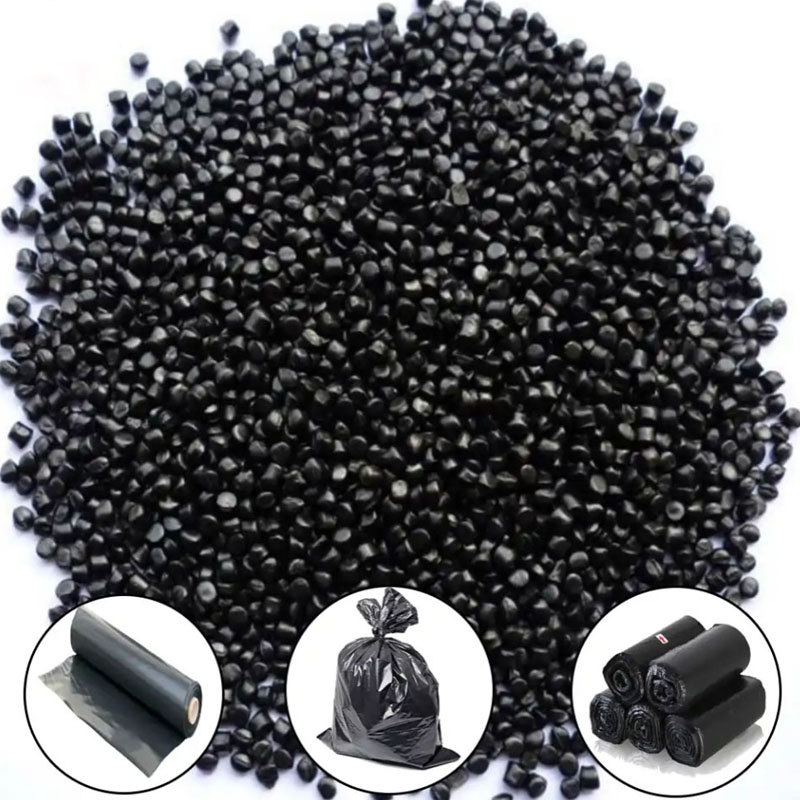What Is Masterbatch and How Is It Transforming the Plastics Industry?
2024-12-18
In the world of plastics manufacturing, one material has become a game-changer for enhancing the properties and appearance of plastic products—masterbatch. But what exactly is masterbatch, and how is it transforming the plastics industry? Let's explore this vital component in plastic production, its benefits, and why it's becoming increasingly essential in various industries.
What Is Masterbatch?
A masterbatch is a concentrated mixture of pigments, additives, or other functional materials, typically in pellet form, that is incorporated into plastics during the manufacturing process. This concentrated mixture is designed to be easily added to polymers (the base plastic material) to improve their color, functionality, or other properties.
The term "masterbatch" comes from the process of creating a concentrated batch of material, which is then diluted with base plastic during production. Masterbatch can be categorized based on its function and the type of additives or pigments it contains. The most common types of masterbatch include:
1. Color Masterbatch: This is the most well-known type, used to impart specific colors to plastic products. It contains pigments or dyes that can give plastic products vibrant, uniform, and long-lasting colors.
2. Additive Masterbatch: This type contains various functional additives like UV stabilizers, antioxidants, flame retardants, or anti-static agents, which enhance the performance and longevity of plastic products.
3. White and Black Masterbatch: These are used for giving plastics a uniform white or black color, often used in packaging and other basic plastic products.
4. Special Effect Masterbatch: These masterbatches provide unique effects like pearlescent finishes, metallic finishes, or transparent appearances in the plastic.
How Does Masterbatch Transform Plastic Production?
1. Improved Color Consistency and Quality
One of the most significant advantages of using masterbatch in plastic production is its ability to deliver consistent, high-quality color. Traditional methods of adding pigments to plastic can result in uneven coloring, leading to variations in appearance. However, with masterbatch, the color is uniformly distributed throughout the plastic, ensuring that the final product has a consistent and aesthetically pleasing look.
Masterbatch manufacturers use advanced techniques to ensure that pigments are evenly blended and dispersed into the polymer. This allows for vibrant colors, precise shade matching, and long-lasting color stability, even in challenging environmental conditions.
2. Enhanced Performance and Durability
Masterbatch doesn't just improve color—it can also enhance the physical properties of the plastic. Additive masterbatches, in particular, play a vital role in improving the performance and longevity of plastic products. For example:
- UV Stabilizers in masterbatch formulations protect plastic products from the damaging effects of ultraviolet (UV) light, preventing fading and degradation over time.
- Flame Retardants help make plastic products more fire-resistant, which is crucial in industries like automotive, construction, and electronics.
- Antioxidants prevent the oxidation of plastic materials, improving their resistance to environmental stress.
- Antibacterial Additives can be incorporated into medical, food packaging, and consumer goods products to inhibit microbial growth.
These enhancements help plastic products perform better, last longer, and meet the specific demands of industries that require high standards of safety, performance, and appearance.
3. Cost-Effectiveness and Efficiency
Masterbatch can help manufacturers save both time and money. Since masterbatch is a concentrated mixture, only a small amount is needed to achieve the desired effect when added to the base plastic. This means that manufacturers can work with smaller quantities of additives or pigments, reducing material waste and improving overall cost-effectiveness.
Moreover, using masterbatch can streamline the manufacturing process. Since it’s pre-mixed and pre-dispersed, there’s no need for complex or time-consuming mixing and blending of additives or pigments. This leads to faster production cycles, less equipment maintenance, and improved efficiency in manufacturing.
4. Customization and Flexibility
The versatility of masterbatch allows for a high degree of customization, making it ideal for a wide variety of applications. Whether it's creating specific colors, adding functional additives, or achieving special effects, masterbatch can be tailored to meet the exact needs of different industries.
For example:
- Packaging manufacturers use color masterbatches to create eye-catching and branded packaging.
- Automotive manufacturers use additive masterbatches to create durable, UV-resistant parts and components.
- Consumer goods producers use special effect masterbatches to create unique product finishes, like metallic or pearlescent surfaces.
This flexibility makes masterbatch an invaluable tool for companies looking to differentiate their products and meet market demands.
5. Sustainability and Environmental Benefits
Sustainability is becoming an increasingly important consideration for manufacturers, and masterbatch plays a role in improving the environmental footprint of plastic products. Masterbatches allow for the precise control of additives, meaning that less material is wasted, and only the necessary amount of additives or pigments are used in production.
Furthermore, masterbatch formulations can be designed to meet environmental standards, such as using bio-based additives, recycled plastics, or compostable masterbatches. These innovations are helping to make the plastic production process more sustainable and aligned with the growing demand for eco-friendly products.
What Industries Benefit the Most from Masterbatch?
1. Packaging Industry
The packaging industry is one of the largest consumers of plastic products, and masterbatch is integral to the production of vibrant, consistent packaging materials. Whether it's food packaging, cosmetic containers, or retail bags, masterbatch ensures that packaging materials look good and perform well. The addition of UV stabilizers, for example, helps protect products from the sun's harmful rays, extending the shelf life of packaged goods.
2. Automotive Industry
The automotive industry relies on masterbatch to produce durable, high-performance plastic components, such as bumpers, dashboards, and trims. Additive masterbatches that include flame retardants and UV stabilizers are essential for meeting the rigorous standards of automotive safety, durability, and aesthetics.
3. Textile Industry
In the textile industry, masterbatch is used to dye fibers and fabrics with rich, consistent colors. Masterbatch also offers functional benefits, such as flame resistance for safety clothing and anti-static properties for fabrics used in electronics.
4. Consumer Goods and Electronics
Masterbatch is also used in producing plastic parts for consumer goods and electronics, where durability and aesthetics are equally important. The ability to add features like scratch resistance, anti-glare finishes, or antimicrobial properties makes masterbatch a valuable tool for ensuring that plastic products meet specific performance requirements.
Conclusion: How Is Masterbatch Shaping the Future of Plastic Manufacturing?
Masterbatch has revolutionized the plastic manufacturing industry by improving the color, performance, and cost-efficiency of plastic products. From vibrant packaging to high-performance automotive components, this versatile material is transforming how plastics are made and used.
As industries demand higher-quality, more durable, and sustainable products, masterbatch is playing a pivotal role in driving these innovations. With its ability to customize and enhance plastic materials, masterbatch is set to continue shaping the future of plastic manufacturing, helping industries stay competitive and meet the evolving needs of consumers.



